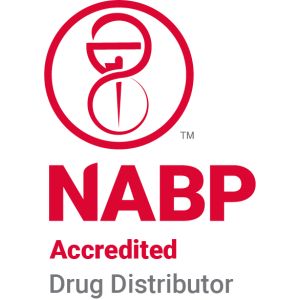Four Advantages of Centralizing Supply Chain Management: A Game-Changer for Medical Device Manufacturers
Material shortages, shipping delays, forecasting difficulties, labor shortages, and regulatory compliance challenges. The supply chain disruptions and pressures of the last three years have certainly rattled medical device manufacturers and their partners.
With lead times in some cases as long or longer than ever before, many OEMs have prioritized key supply chain shifts to protect productivity. These include strategies to build a more resilient supply chain, including diversification of the supplier base, localization and nearshoring, and increased business continuity and risk planning. Many OEMs, though, overlook the single most impactful supply chain shift: centralizing supply chain management with a single expert partner.
Centralizing supply chain management brings together various functions, relationships, and processes under a single, unified point of contact. It can be transformative for medical device manufacturers, enabling increased operational efficiency and cost savings while lowering risk and improving business performance. With OEMs’ internal teams often stretched to capacity, centralized supply chain management can be the factor that helps a manufacturer relieve mounting pressure while also meeting launch timelines or market demands. In this article, we look at four advantages of centralizing supply chain management—and what strengths OEMs should prioritize in an expert partner.
Advantage #1: Better visibility and control
Simply put, a supply chain makes it possible to translate market demand to finished goods—but of course, sustaining this is anything but simple. Centralizing supply chain management with a single expert point of contact can provide a holistic view of every stage in the supply chain, allowing manufacturers to better track and monitor each stage of the process.
Consider this benefit through increased supply chain visibility. With better data and visibility, OEMs and their partners can gain insights into demand patterns, inventory levels, production cycles, and supplier performance. With this enhanced visibility, OEMs can make better business decisions regarding resource allocation and more proactively manage current and future risks. When problems do arise, better visibility makes it easier to react and adjust.
Advantage #2: Enhanced collaboration
Even before the wild ride of the last three years, supply chain management was inherently complex. Successful coordination entails full management of the inbound supply chain, including components, materials, and contract manufacturers, as well as navigating emergent challenges and coordination hiccups that could increase lead times.
With centralized management, OEMs and their partners can build and sustain a more collaborative relationship. This extends to suppliers and distributors as well. The end result is a better coordinated supply chain, working more seamlessly to translate market demand through production, with more accurate forecasting and reduced lead times. Centralized supply chain management also streamlines communication and processes, eliminating redundancy and improving efficiency and productivity.
Advantage #3: Proactive risk management
Given the shortages, stockouts, and ongoing challenges, risk stalks every supply chain conversation these days. It’s easy to see why: when one hand doesn’t necessarily know the full extent of what the other one is doing, surprises are the result.
Centralized supply chain management can enable better risk identification and mitigation strategies for the full supply chain. With an expert partner, manufacturers can put more robust contingency planning in place, better monitor supplier performance, and rapidly respond to emergent issues. In the end, proactive risk mitigation can mean the difference between a minor wrinkle and a major upset.
Evolution in regulatory oversight also increases supply chain risk. A centralized supply chain with a single expert partner, though, can ensure better tracking and traceability and ultimately reduce compliance-related risks and penalties.
Advantage #4: Improved response to changing market demands
Finally, OEMs are not nonprofits—the ultimate goal is to drive business growth. And, simply put, supply chain capacity and management must be able to scale to accommodate growth.
With a centralized supply chain, manufacturers can seamlessly integrate new suppliers, adapt to changes in the market, continue legacy production, and launch new products without disrupting their core supply chain processes. Supply chain centralization enhances business agility by enabling faster adjustments to production, inventory management, and distribution.
In addition, centralized supply chain management can help OEMs optimize their inventory footprint with accurate demand forecasting, visibility, and coordination. This can help to meet account and growth goals across the business more easily and efficiently.
Centralizing your supply chain with a strategic partner
From better visibility and risk management to improved agility, centralizing supply chain management offers medical device manufacturers many benefits. Ultimately, with the right partner, OEMs can navigate the ever-evolving complexity of the medical device industry with confidence to grow their businesses, ensure quality, and protect patient safety.
Unlocking these benefits, though, requires the right expert partner, who has the expertise, capacity, and responsiveness to create sustainable success. A single expert partner like Millstone will advance centralized supply chain management through:
- Coordinating inbound supply, including components, materials, and contract manufacturers;
- Understanding the current and future capacity demands of your supplier network and vendor partners, ensuring they are aligned with anticipated needs;
- Creating clarity with enhanced visibility and control over every step in the supply chain, boosting supply chain resiliency and agility;
- Working to proactively manage current and future risk to protect production and business continuity;
Learn more about our approach to building a more efficient supply chain.
Millstone offers post-manufacturing and aftermarket services to more than 50 customers, including some of the top 10 orthopedic companies in the world. We are constantly evolving our processes and services to help OEMs achieve sustainable success. We offer clean room packaging, medical device specific warehousing, finished goods distribution, loaner kit management, advanced inspection and testing, and reverse logistics services—all with an unparalleled focus on quality.
What could we help you do better? Learn more at https://millstonemedical.com.
Comments are closed.



